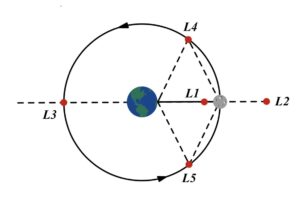Week 6: Houston, we have a problem…
Kira A -
Welcome back, everyone! I hope you are all having (or probably had by the time you are reading this) a great spring break. This past week I have been focusing on different approaches to establishing a Translunar Injection Orbit (TIO) from an initial Low Earth Orbit (LEO). This photo is of the first method I came up with for the orbit-raising maneuver using the modified rocket equation I have previously spoken about. It makes use of the delta-v value that can be found using the rocket equation and combines that delta-v value with the previous velocity of the spacecraft at the perigee point.

After coding it into MATLAB and comparing it with a traditional single burn transfer orbit, I found that it did not produce the desired results. It uses the same amount of fuel to create the same effect as a singular burn, so I need to figure out a different approach to the orbit-raising maneuver if I am to create a more efficient trajectory to the Moon.
Beyond the trajectory/transfer orbit to the Moon, I am also considering different types of orbits around the Moon (selenocentric orbits) once my spacecraft arrives. One of the orbit families I am considering is the halo orbit family. This family features highly eccentric orbits that are associated with one of the Earth-Moon Lagrange points. Lagrange, or libration, points are areas of space where a small object experiences equal influence from the gravitational forces of two more massive objects, in this case, the Earth and the Moon. The halo orbit family is of particular interest for my mission because the NASA Lunar Gateway mission plans to make use of a near-rectilinear halo orbit (NRHO), meaning that if my spacecraft is to dock with the Gateway station, it must be inserted into this orbit as well. The NRHO, due to its orientation in space around the Moon, allows the spacecraft to always have a direct line of sight with the Earth; thereby enabling an open line of communication between the spacecraft and ground control at all times. I will be exploring the different options in the coming weeks as we get deeper into the mission!

This week I plan to continue my work on the orbit-raising maneuver at the Arizona State University – Tempe campus, as I will have access to some of the resources there this Thursday to help maximize my efforts. I am also considering bolstering the spacecraft design element of my mission, however, I need to run this by my mentors Mr. Joseph, Dr. Farooq, and Dr. Goodwin for their approval.
Thank you again to my mentors for giving their time and thought to this project and guiding me as I navigate each challenge throughout. Thank you all for tuning back in or joining in if it’s your first time! I hope to bring you some more exciting findings next time.
Ad Lunam!

Comments:
All viewpoints are welcome but profane, threatening, disrespectful, or harassing comments will not be tolerated and are subject to moderation up to, and including, full deletion.